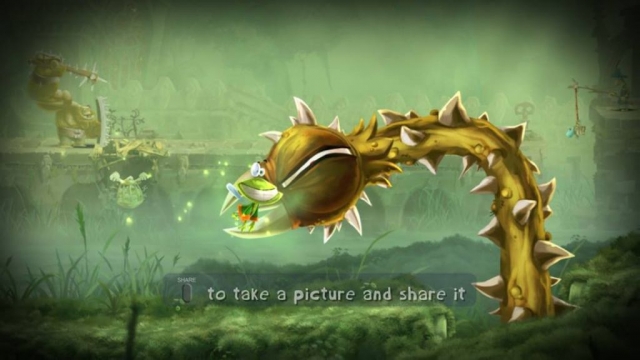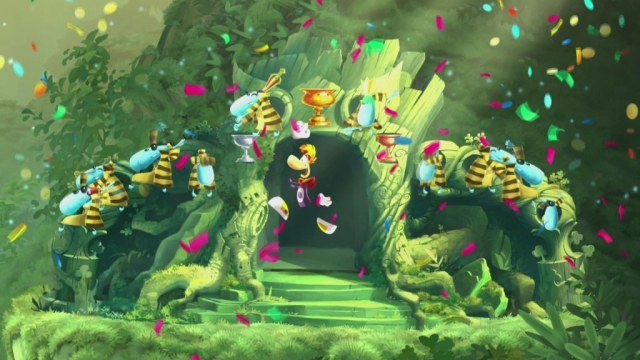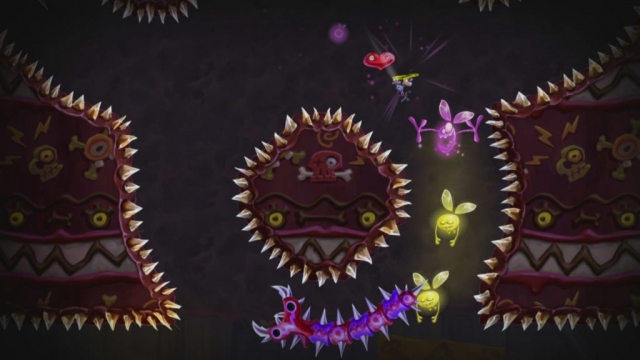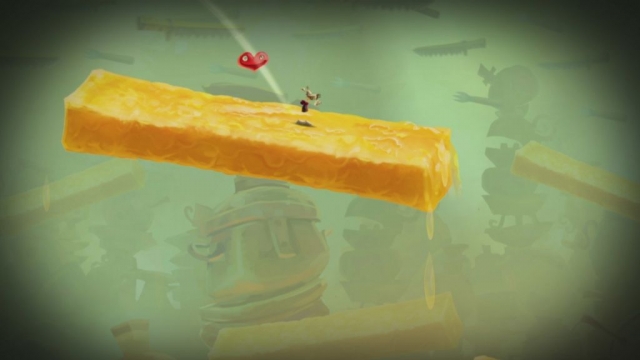Rayman Legends Next-Gen
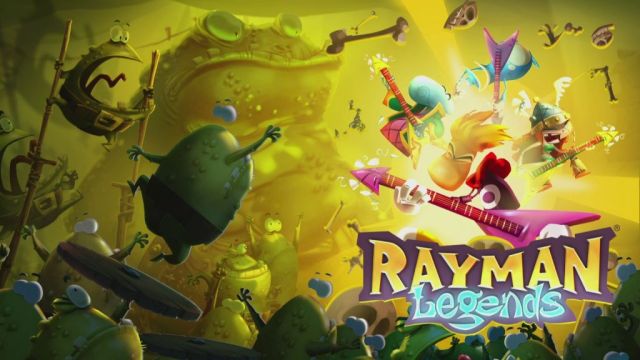
Rayman Legends received rave reviews when it was finally released in the fall of 2013. The long-delayed game drew the ire of some because of massive delays that saw it go from a Wii U exclusive to a multi-platform game. Now, it’s hit the next generation with some enhancements to the visuals and small functions added in that may surprise you. With its combination of fast-paced gameplay, stunning graphics, and one of the most diverse soundtracks in the genre, you’ve got a game that really can’t be beat.
The PS4’s hardware is put to reasonably good use for this re-release. The touchpad is used for scratcher tickets much like in Saturday Morning RPG on the OUYA, but also has a function that hasn’t been used in any other game – the ability to freeze the action at any time and zoom in to take a screenshot. This may seem like nothing, but the feature really showcases the uncompressed textures as you can zoom in as much as you want and get a razor-sharp image – although it’s a bit tough to do that with the pinch and zoom on the small touch pad. Once you frame your shot, just hit Share and plaster it all over Facebook and Twitter… where it will be horribly compressed due to the PS4’s share function not allowing for uncompressed shots. This undermines the feature, but if you’re ever able to put uncompressed images up with Share, it’ll be able to realize its full potential with stunning views of things like flames or water without the need for internal capture device to take far more accurate images. In motion, the game really doesn’t look all that much cleaner – but it definitely is in still form. Another nice benefit is that the already-small loading times when starting and exiting levels are now gone. The PS4’s longer handles and more comfortable trigger buttons make the non-stop running stages much more fun here than on the PS3 version, while the d-pad is easily the most comfortable one to use for a console version.
The core gameplay is the same as Origins – you go through a bunch of levels running, jumping, and punching through as many levels as you can. Unlike Origins, Legends lacks a cluttered world map and instead goes for a “hop in the painting” mechanic ala Mario 64. This setup works far better and keeps things more organized. It’s also a bit easier to unlock stages here since there are more ways to get the creatures needed to unlock them now than there were in origins. Running, jumping, and attack controls are as spot-on as ever and the level design is better than it was in Origins. The Wii U version featured second-screen gameplay, which is simulated on other systems by using shoulder buttons to spin things around, or the Circle to control Murfy and have him move things for you. A common occurrence will involve a quick platforming section and you’ll use Murfy to shift around some possible platforms or poke the eyes of enemies so you can bounce off of them. The funniest bit with him involves tickling a giant foe so you can defeat them – although sending him off to show through a bunch of cake is up there as well.
The second-screen experience is the biggest new addition to the game compared to Origins, and is replicated shockingly well using a regular controller. Most of the time, I found it to be much easier to use the buttons than the screen I’d grown accustomed to using for the Wii U’s demo. Surprisingly, even with the touchpad, you don’t use it for the Murfy sections. Faster-paced sections benefit from the buttons since you don’t have to worry about your fingers ever blocking your view, although some sections that involve running, jumping, and Murfy would certainly be easier to execute with a touchscreen since you have to hold a trigger button to run and it’s a bit tough to run, jump, and control Murfy at the same time.
Rayman Origins veterans will know what to expect from Legends – it’s a fast-paced platformer that rewards you for getting into a solid rhythm with the stage by giving you more lums, increasing your overall score at the end of the stage, allowing you to unlock more playable characters and scratch-off tickets that are good for many things. Beyond lums, you’ll also want to rescue as many captured Teensies as possible. You’ll know how many there are in each stage based on a pre-stage graphic, and capturing them will let you unlock more stages for the main game. In the initial release of Legends, Wii U owners got Origins levels because the game wasn’t on that platform. Now, those same stages are here on the PS4 and look even sharper – essentially giving you the two best Rayman platformers in one package on the system.
Origins levels can be unlocked with the tickets, which also let you get more lums. Unlike a lot of platformers, Legends actually tracks your XP and while it seems odd to level up in a platformer, it does feel rewarding to do so. You’ll get a big lum bonus for doing so, and then gain access to more characters. There’s a constant stream of things to do and rewards for doing them and it makes the collect-a-thon nature of the gameplay far more enjoyable here than it is in many N64 3D platformers where it gets old fairly quickly.
Beyond regular gameplay, you’ve also got a soccer mini-game that doesn’t just allow you to find hidden teensies, but also participate in a multi-player game. As users of the challenge app will be familiar with, there are also daily and weekly challenges that test your platforming skills each day in quick levels against the ghosts of other players. Beyond the ghosts kind of acting as distractions at times, these things are quite awesome and give you incentives to play every day. There are also invasion stages that remix existing stages after you’ve beaten them with a tight 60 second limit that grants you a bigger lums bonus after beating it in either 40 or 50 seconds – these are addictive and it’s easy to find yourself repeating a stage over and over if you’re just a second or so off.
Thanks to the uncompressed visuals, Legends is a more satisfying feast for the eyes. The Ubi Art engine that debuted in Origins has been brought back and expanded upon. Colors still pop off of HD displays, but now have a lot more depth to them. This is especially evident with every background and with many foreground elements. It results in a more realistic-looking silly world, which adds a strange sense of realism to a game with a limbless protagonist. Ubisoft found a way to improve on the graphics in Origins, and the mere notion of that seems impossible, but is true, and is quite evident when replaying some of that game’s stages with the revamped graphics.
Like Origins, Legends has a very enjoyable soundtrack. The music varies from happy to a bit more serious and is always fun to listen to during gameplay. The most hummable fare afterwards tends to be limited to the relatively few music stages, which aren’t just the highlight of the soundtrack, but of the game itself. There’s nothing quite like action-platforming to the beat of “Eye of the Tiger” and crafting some of the notes yourself by picking up lums to the beat of the song. The sound effects are basic cartoony sound bytes for each character, and are perfectly fine for what they are.
Rayman Legends is the best entry in the series to date and the new king of 2D platforming. Nothing in any modern 2D Mario game is as inventive as this, and in a lot of ways, Rayman Legends is the kind of game many older players want from the 2D Mario and Sonic games because it doesn’t just stick with old tropes – it reinvents platforming and tries new things. The second I played the Castle Rock stage on the Wii U demo many months ago, I knew this game would at least try some very different things, and that trend continues with silly stages like a food-themed one where you slide down button to progress and explore fruits and vegetables for teensies and lums. At $40, you get the definitive version of nearly two full games worth of content and it is all top-shelf stuff. If you’ve already plowed through another version though, you’ll be better off waiting for a price drop.
Reviewed By: Jeremy Peeples
Publisher: Ubisoft
Rating: 91%
——————————————————————————–
This review is based on a digital copy of Rayman Legends for the PlayStation 4 provided by Ubisoft.
 Game Over Online
Game Over Online